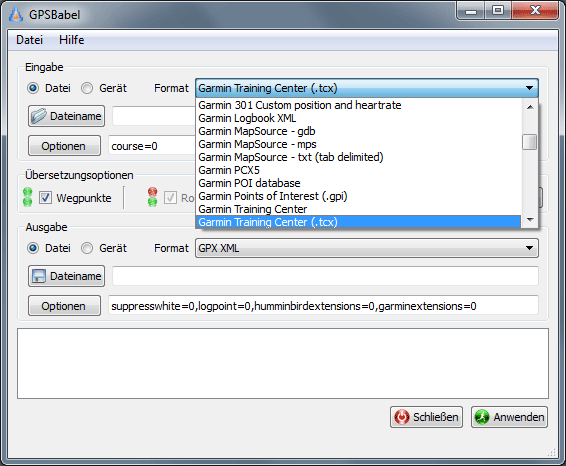
Since GPXTrackMap simply adds up the altitude changes from trackpoint to trackpoint (positive and negative changes individually), it becomes quite clear why the (positive) altitude change calculated from the unfiltered file is much bigger than the one from the filtered version. If you look at the original track and the 250-point version with a tool like GPX Editor, you will see the difference: This "failure" actually is at it's worst - if you don't move at all (!). Note: It is important to understand that GPS devices (for technical reasons) have a "ripple" or "noise" in the recorded data, which gets more the less you move (!). The answer lies in two issues: firstly the inaccuracy of the elevation data as recorded by the GPS (a Garmin Oregon in this case), combined with -secondly- the " flattening" of the track that comes from filtering out track points. the 250-point version reports merely 400 m - what's happening here? Note that the 100-point example above still "looks" pretty much like the original one with almost 2000 trackpoints - and is, for most users, still accurate enough so they (or yourself) could follow the track - good job, GPSBabel!īut one thing seems strange: the original file reports 823 m of upward altitude change, while e.g. 2.1. Original track (as recorded: almost 2000 track points) GPSBabel does a pretty good job on filtering, if you don't overdo (that is: don't filter out to much track points). If you look at the track infos for the track versions below, you will notice that filtering out trackpoints does have some effect on the calculated length, and it has a rather large effect on the up/down altitude differences. See the examples below to get an idea on how filtering out trackpoints affects the "quality" of your track. Note: i have no experience with faster moving things, Space Shuttles or the like :-) 500.įinding out what is "reasonable" depends on your track distance, and whether you recorded it while hiking (=slow), cycling (=medium) or with a motorbike or car (=fast).

number of waypoints to "something reasonable" - try e.g.

Select "mytrack-filtered.gpx" as Output file. Select your GPX file - say, "mytrack.gpx" - as Input file. (you can also use tools like Garmin's BaseCamp for that same purpose - look here for some instructions.) 1. Reducing the number of trackpoints (You can also use it to do all sorts of other stuff, like correcting / shifting / stripping out timestamps - see the GPSBabel documentation. You can give it a maximum number of trackpoints, and it will reduce your GPX file to that given amount. To do this, you can use the great (and free) GPSBabel tool.

Not only that this can greatly reduce the size of the GPX files, it can actually make them "better" (see below). I mostly record tracks with a rather high frequency (to get as many trackpoints "as i can get"), but to publish them, it is often a good idea to minimize the amount of trackpoints. the recording frequency of the track points.the length of the track (obviously) and.A GPX track file can become quite large, depending on:


 0 kommentar(er)
0 kommentar(er)
